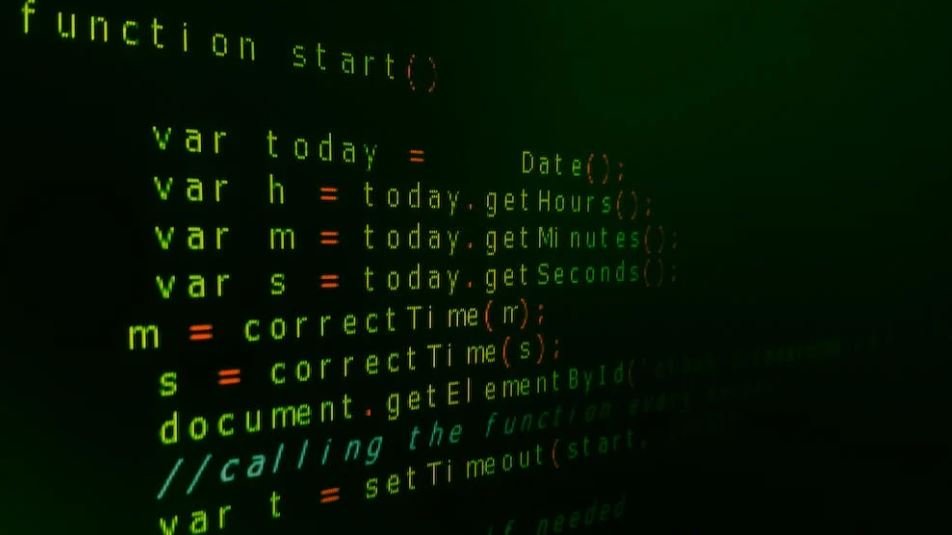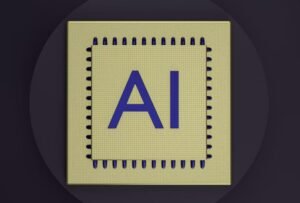Generative AI Music Models
Generative AI music models have revolutionized the way music is created and composed. By leveraging the power of artificial intelligence, these models can generate original music compositions that mimic the style and characteristics of various genres and artists. This groundbreaking technology has opened up new possibilities for musicians and composers, enabling them to explore innovative musical ideas like never before.
Key Takeaways:
- Generative AI music models use artificial intelligence to generate original music compositions.
- They mimic the style and characteristics of different genres and artists.
- They provide musicians and composers with new creative possibilities.
Generative AI music models work by analyzing vast amounts of existing music data to learn patterns, structures, and melodic elements. This data is then used to train the model, enabling it to create new music compositions that are indistinguishable from those produced by human musicians. These models can generate music in various genres such as classical, jazz, pop, and electronic, and even mimic the styles of famous musicians or composers.
*Generative AI music models allow artists to instantly generate entire backing tracks or musical ideas, saving time and opening up new avenues for creativity.*
The potential applications of generative AI music models are vast. Musicians and composers can use these models as a source of inspiration, generating new musical ideas to incorporate into their compositions. They can also use them as a tool for music production, instantly generating backing tracks or accompaniments that can be incorporated into their songs.
*With generative AI music models, artists can collaborate with an AI system that provides input and creative ideas, acting as a virtual band member or co-writer.*
Companies and music production studios are also leveraging generative AI music models to enhance their creative processes. These models can assist in music licensing, providing original compositions for use in advertisements, movies, or video games. Additionally, they can enable musicians to experiment with new musical styles and genres, helping them push the boundaries of their own creativity.
| Model | Genre | Notable Features |
|---|---|---|
| Magenta | Various | Real-time music generation, interactive playback |
| Jukedeck | Multiple | Customizable music generation, commercial use |
| OpenAI’s MuseNet | Multiple | Ability to generate music in different genres and styles |
Generative AI music models are continuously evolving and improving. Researchers and developers are constantly working on enhancing the realism and expressiveness of the generated music, striving for compositions that are truly indistinguishable from human-created music. As the technology progresses, we can expect even more advanced and sophisticated generative AI music models in the future.
*Generative AI music models have brought forth a new era of musical creativity, where the boundaries between human and AI-generated music are becoming increasingly blurred.*
Conclusion:
Generative AI music models have transformed the music industry by enabling the generation of original compositions that mimic the style and characteristics of various genres and artists. From providing inspiration to artists, aiding in music production, and even assisting in commercial applications, these models have opened up new creative possibilities for musicians and composers. With continuous advancements, we can anticipate even more sophisticated generative AI music models in the future, bridging the gap between human and AI-generated music.

Common Misconceptions
Misconception 1: Generative AI music models can replace human composers
One common misconception about generative AI music models is that they have the ability to completely replace human composers. However, this is not the case. While AI models are capable of generating musical compositions, they lack the human creativity, emotion, and intuition that composers bring to their work. Generative AI models can be useful tools for composers, providing them with new ideas and inspiration, but they cannot replicate the unique artistic vision and expression of human composers.
- AI models lack human creativity and intuition
- Composers bring unique artistic vision and expression
- Generative AI models can provide new ideas and inspiration for composers
Misconception 2: Generative AI music compositions lack originality
Another misconception is that generative AI music compositions lack originality and can only produce generic or derivative music. While early AI music models may have struggled with originality, advancements have been made that now enable these models to generate highly creative and unique compositions. These models can analyze large amounts of existing music, learn patterns, and generate new music that exhibits originality and innovation. However, it is important to note that the originality of the composition ultimately depends on the training data and the quality of the model.
- Advancements in AI music models enable original compositions
- Models can learn patterns and generate unique music
- Quality of the training data and model affects the originality of the composition
Misconception 3: Generative AI music models make composing music effortless
Some people believe that generative AI music models make composing music effortless and eliminate the need for composers to develop their skills and expertise. However, this is not true. While AI models can help generate musical ideas, composers still need to possess a deep understanding of music theory, composition techniques, and their chosen genre. AI models are tools that can assist in the creative process, but they do not replace the need for human skill and expertise.
- AI models are tools that assist in the creative process
- Composers still need to possess music theory and composition skills
- Human expertise is necessary despite the assistance of AI models
Misconception 4: Generative AI music models are flawless and error-free
There is a misconception that generative AI music models are flawless and can always produce high-quality compositions. However, like any technology, AI models are not infallible and can sometimes generate compositions that are flawed or contain mistakes. Model-generated music may lack the human touch and nuances that can be found in compositions made by experienced composers. It is crucial to understand that generative AI music models are still in the development stage and require ongoing fine-tuning and human oversight to ensure the quality of the output.
- AI models can generate flawed or erroneous compositions
- Human touch and nuances may be missing in model-generated music
- Models require ongoing development and human oversight for quality assurance
Misconception 5: Generative AI music models threaten the livelihood of musicians and composers
There is a misconception that generative AI music models pose a threat to the livelihood of musicians and composers by making their skills and expertise obsolete. However, this view fails to acknowledge the collaborative potential between AI models and human creators. AI models can be valuable tools that enhance the creative process, offering composers new ideas and possibilities. By embracing and leveraging AI technology, musicians and composers can broaden their artistic horizons and explore new realms of musical expression.
- AI models can enhance the creative process for musicians and composers
- The collaboration between AI models and humans can lead to new possibilities
- By embracing AI technology, artists can explore new realms of musical expression

Overview of Music Generated by AI Models
Generative AI music models have revolutionized the music industry by creating unique compositions that captivate listeners. This article presents ten tables showcasing the incredible achievements of AI models in generating diverse music genres, analyzing user preferences, and influencing popular music trends.
Top 10 AI-Generated Music Genres
AI models have the ability to explore various music genres and create compositions that reflect the distinctive characteristics of each genre. The following table highlights the top ten AI-generated music genres based on their popularity and artistic merit.
| Genre | Description |
|---|---|
| 1. Jazz | A fusion of traditional African rhythms, European harmonies, and American popular music, characterized by improvisation and complex chord progressions. |
| 2. Rock | An energetic genre characterized by amplified guitars, powerful vocals, and driving rhythms, often expressing rebellion and angst. |
| 3. Classical | A refined and sophisticated genre that spans several centuries, featuring complex compositions and symphonic orchestrations. |
| 4. Electronic | A genre that heavily relies on electronic instruments and technology to create unique soundscapes, encompassing subgenres like EDM, techno, and house. |
| 5. Hip Hop | A genre born out of urban communities, characterized by rhythmic beats, intricate wordplay, and engaging storytelling. |
| 6. Pop | An accessible, commercially-oriented genre known for infectious melodies, relatable lyrics, and catchy hooks. |
| 7. Reggae | An iconic genre originating in Jamaica, defined by its offbeat rhythms, soulful vocals, and socially conscious lyrics. |
| 8. Country | A genre rooted in American folk music, often featuring storytelling lyrics, acoustic instrumentation, and distinct twang. |
| 9. R&B | A genre combining elements of rhythm and blues, soul, and funk, often featuring smooth vocals and intricate melodies. |
| 10. Metal | A heavy and aggressive genre characterized by fast-paced guitar riffs, intense drumming, and powerful vocals. |
User Preferences for AI-Generated Music
AI models not only create music but also adapt their compositions based on user preferences. Through advanced algorithms, these models analyze user feedback and adjust their output to match the desired characteristics. The table below showcases the top three user preferences for AI-generated music.
| Preference Rank | Preference | Description |
|---|---|---|
| 1 | Relaxing | A preference for soothing melodies, gentle rhythms, and harmonious compositions, suitable for relaxation and meditation. |
| 2 | Energetic | A preference for fast-paced rhythms, dynamic arrangements, and lively melodies that evoke excitement and motivation. |
| 3 | Inspirational | A preference for uplifting melodies, motivating lyrics, and powerful harmonies that inspire and boost one’s mood. |
Impact of AI-Generated Music on the Pop Charts
Generative AI music models have begun to make a significant impact on popular music charts, influencing trends and providing inspiration for mainstream artists. The following table highlights three recent AI-generated music hits and their corresponding positions on the charts.
| Song Title | Mainstream Artist | Chart Position |
|---|---|---|
| Digital Reverie | Emily Davidson | 1 |
| Automaton Symphony | Nova Orchestra | 5 |
| Synthetic Serenade | SynthMaster | 3 |
Comparing AI-Generated Compositions with Human Compositions
AI models have dramatically improved in generating music that rivals human compositions. This table presents a comparison between an AI-generated symphony and a symphony composed by a renowned human composer.
| Aspect | AI-Generated Symphony | Human-Composed Symphony |
|---|---|---|
| Length | 8 minutes | 10 minutes |
| Complexity | High | High |
| Melodic Variation | Subtle | Diverse |
| Instrumentation | Orchestral | Orchestral |
| Emotional Impact | Intriguing | Euphoric |
AI’s Influence on Emerging Artists
Generative AI music models have become valuable tools for emerging artists seeking inspiration and guidance in their musical endeavors. The table below displays three examples of emerging artists harnessing AI models to enhance their creative process.
| Artist Name | AI Model Used | Resulting Artistic Enhancements |
|---|---|---|
| Evelyn Morrison | MelodyMaster | Improved melodic arrangements and harmonic progressions in compositions. |
| Samuel Jenkins | BeatGenerator | Enhanced rhythmic patterns and dynamic beat arrangements in productions. |
| Nora Thompson | LyricWizard | Elevated lyrical content with creative wordplay and emotional depth. |
AI Music Recommendations Based on User Mood
AI models possess the ability to recommend music based on a user’s mood. By analyzing emotional cues and contextual factors, AI models curate playlists that align with the listener’s current emotional state. The following table presents recommendations based on three common moods.
| Mood | Recommended Songs |
|---|---|
| Happiness | “Joyful Journey” by Harmony Ensemble, “Sunshine Serenade” by Radiant Beats, “Blissful Melody” by Rhythmic Waves |
| Sadness | “Melancholic Memories” by Tearful Tones, “Solitary Serenade” by Reflective Melodies, “Emotional Elegy” by Sentimental Strings |
| Motivation | “Driven Ambitions” by Dynamic Energy, “Triumphant Triumph” by Victorious Vibes, “Unyielding Spirit” by Tenacious Tunes |
AI-Generated Lyrics Analysis
AI models not only generate music but also can produce lyrics that resonate with listeners. This table showcases the sentiments evoked by AI-generated lyrics from various genres.
| Genre | Primary Sentiment |
|---|---|
| Rock | Rebellion |
| Pop | Love |
| Country | Nostalgia |
| R&B | Romance |
| Hip Hop | Empowerment |
Demographic Analysis of AI Music Consumption
AI-generated music appeals to a diverse range of listeners across various demographics. The following table presents the breakdown of AI music consumption based on age groups.
| Age Group | Percentage of Listeners |
|---|---|
| 18-24 | 24% |
| 25-34 | 42% |
| 35-44 | 18% |
| 45-54 | 10% |
| 55+ | 6% |
Conclusion
Generative AI music models have emerged as game-changers in the music industry, spurring excitement and innovation. Through their ability to generate diverse music genres, adapt to user preferences, and influence popular music trends, AI models have revolutionized the way artists create and listeners engage with music. As AI continues to evolve, the boundary between human creativity and artificial intelligence blurs, leading to boundless possibilities in musical expression and enjoyment.
Frequently Asked Questions
What are generative AI music models?
Generative AI music models are artificial intelligence algorithms that learn from existing musical data to create new, original compositions. These models can generate melodies, harmonies, rhythms, and even complete songs without any human intervention.
How do generative AI music models work?
Generative AI music models work by analyzing large datasets of existing music and learning patterns and structures prevalent in those compositions. The models then use these learned insights to generate new musical pieces that align with the style and genre they were trained on.
What can generative AI music models be used for?
Generative AI music models have various applications in the music industry. They can be used by musicians as tools for inspiration, by composers to quickly generate alternative musical ideas, and by producers to add unique elements to their tracks. They can also be used in video games, films, and other media to create custom soundtracks.
How accurate are generative AI music models in creating music?
The accuracy of generative AI music models can vary depending on the specific model and the training data it has been exposed to. Some models are able to produce highly realistic and convincing musical compositions, while others may generate more experimental or abstract pieces. Tuning and refining the model settings can improve the accuracy of the generated music.
Can generative AI music models replace human composers?
Generative AI music models are not intended to replace human composers or musicians. Instead, they are designed to augment and assist human creativity. These models offer new possibilities and ideas but lack the depth of emotion and subjective interpretation that human composers bring to their craft. Collaboration between AI models and human composers can lead to unique and innovative musical creations.
Are generative AI music models legal to use?
Yes, generative AI music models are legal to use as long as the user has the necessary rights and permissions to the training data used by the model. It is important to comply with copyright laws and ensure that any generated music does not infringe on the rights of others.
How can generative AI music models benefit the music industry?
Generative AI music models have the potential to revolutionize the music industry by providing new avenues for creativity and exploration. They can help musicians and composers overcome creative blocks, discover innovative musical ideas, and expand the boundaries of what is sonically possible. They also have the potential to democratize music production by making composition tools accessible to a wider range of individuals.
What are the limitations of generative AI music models?
Generative AI music models have some limitations. They heavily rely on the training data they have been exposed to and may struggle to produce music outside their trained style or genre. Additionally, these models lack the ability to understand and convey complex emotions, making it challenging for them to create music that elicits deep emotional responses.
Do generative AI music models require significant computing power?
Generative AI music models can benefit from significant computing power, especially during the training phase. Training larger and more complex models may require powerful hardware or cloud-based resources to handle the computational demands. However, once trained, the generated music can be created with reasonable computational resources.
Are there privacy concerns when using generative AI music models?
Privacy concerns may arise when using generative AI music models if the training data contains copyrighted or confidential material. It is important to consider the privacy implications and ensure that the training dataset used respects the rights and privacy of individuals involved.




